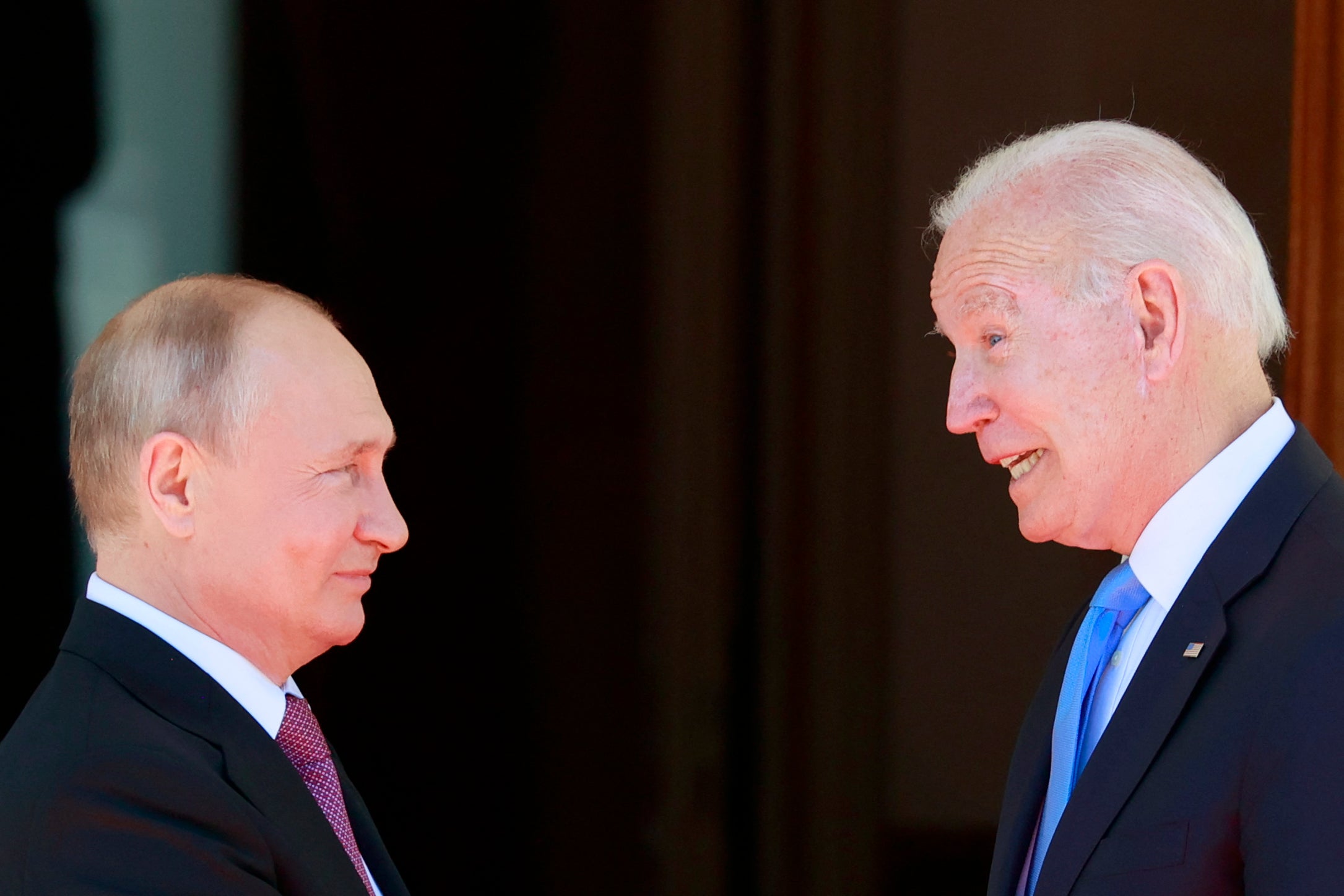Biden scrambles to defuse Ukraine crisis in first foreign policy test since Afghanistan debacle
Some experts believe Putin views US as being as vulnerable as Russia was after break-up of Soviet Union, writes Andrew Buncombe

There were three questions for Pentagon spokesman John Kirby and each of them was excellent.
What, asked CNN’s long term defence correspondent Barbara Starr, specific military capabilities would the US troops take with them to Europe, and what specifically was their mission? In addition, how would the US know when that mission was accomplished?
The questions levelled at Kirby came as the Pentagon said it had put 8,500 troops on a state of heightened alert, as pressure mounted on Joe Biden to respond more forcefully to the perceived threat to Ukraine from Russia.
Several of America’s Nato allies, including Spain, Denmark and the Netherlands, said they were deploying ships and fighter jets in Eastern Europe.
“This is about getting troops ready,” Kirby told Starr.
“This is about giving reassurance that we’re going to be ready to help bolster our allies with capabilities they might need, and we’re going to do this in lockstep with them and with the alliance. This this is really about reassuring the eastern flank of Nato.”
While Kirby said the moves were intended to calm America’s allies in Europe, there is little doubt the actions have a domestic audience as well.
Since a press conference last week to mark his first year in office, Biden has been under fire on many fronts for comments in which he suggested the US would not respond if Russia only carried out a “minor incursion” into Ukraine.
Officials in Ukraine and other European countries were despondent. Biden’s critics in the Republican Party, conveniently ignoring Donald Trump’s alleged cosying up Russia, leapt at the chance to attack.
“I think they don’t see President Biden as credible,” former Secretary of Sate Mike Pompeo said on Fox News, over the weekend.
He said even Biden’s attempt to clarify his comments was a mess.
“We need to be unequivocal when one speaks in diplomacy, especially in the age of cyber and space and true capabilities that exceed what we had seen during the time of World War II,” he said.
“If there’s room for doubt, if there’s space, Vladimir Putin will drive a truck through that gap.”
A similar point was make by Russia expert Fiona Hill, a witness at Trump’s first impeachment trial, who in an op-ed in the New York Times, wrote that Putin believed the US, fresh from a shambolic withdrawal of its troops from Afghanistan, was in a weakened state.
“Mr Putin is a master of coercive inducement. He manufactures a crisis in such a way that he can win no matter what anyone else does,” she said.
A succession of US presidents have sought to find an appropriate way to confront Vladimir Putin, something many feel is more pressing since the 2014 annexation of the Crimean peninsula.
Back then, when Biden was Barack Obama’s vice president, the US responded with financial sanctions, and more military flights over eastern Europe. In short, it did what it could, without endangering American lives.
This time around, Biden’s hand appears much the same.
Polls suggest just one-in-six Americans support sending US troops to fight against Russian forces in Ukraine. It is hard to imagine Biden is among them.
For now, the US is stressing the need to act collectively. Its troops would only get dispatched if Nato deployed its special response force. The NRF consists of around 40,000 multinational troops.
Nato Secretary General Jens Stoltenberg said on Monday the alliance would take “all necessary measures”.
“We will always respond to any deterioration of our security environment, including through strengthening our collective defence,” he added.
On Monday afternoon, Biden and European leaders joined Stoltenberg to discuss the latest developments.
“The leaders agreed that, should a further Russian incursion into Ukraine happen, allies must enact swift retributive responses including an unprecedented package of sanctions,” said a statement released afterwards.
Russia, which has shifted around 100,000 troops to its borders with Ukraine, has denied it wants to invade. It has accused Western nations of hysteria.
“As for specific actions, we see statements by the North Atlantic Alliance about reinforcement, pulling forces and resources to the eastern flank. All this leads to the fact that tensions are growing,” said Kremlin spokesman Dmitry Peskov, according to Reuters.
“This is not happening because of what we, Russia, are doing. This is all happening because of what Nato and the US are doing and due to the information they are spreading.”
In her article, Hill, the British-born former National Security Council official who is currently a fellow at the Brookings Institution, suggested Putin wished America to suffer the same pain and humiliation as he and other Russians did following the break-up of the Soviet Union 30 years ago.
She said he wanted to give the US “a taste of the same bitter medicine Russia had to swallow in the 1990s”.
“He believes that the United States is currently in the same predicament as Russia was after the Soviet collapse: grievously weakened at home and in retreat abroad,” she wrote.
“Mr Putin’s aim is bigger than closing NATO’s “open door” to Ukraine and taking more territory — he wants to evict the United States from Europe.”
Subscribe to Independent Premium to bookmark this article
Want to bookmark your favourite articles and stories to read or reference later? Start your Independent Premium subscription today.

Join our commenting forum
Join thought-provoking conversations, follow other Independent readers and see their replies